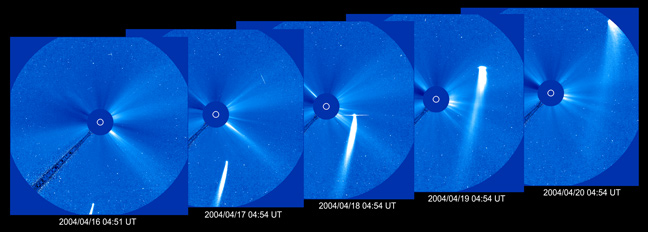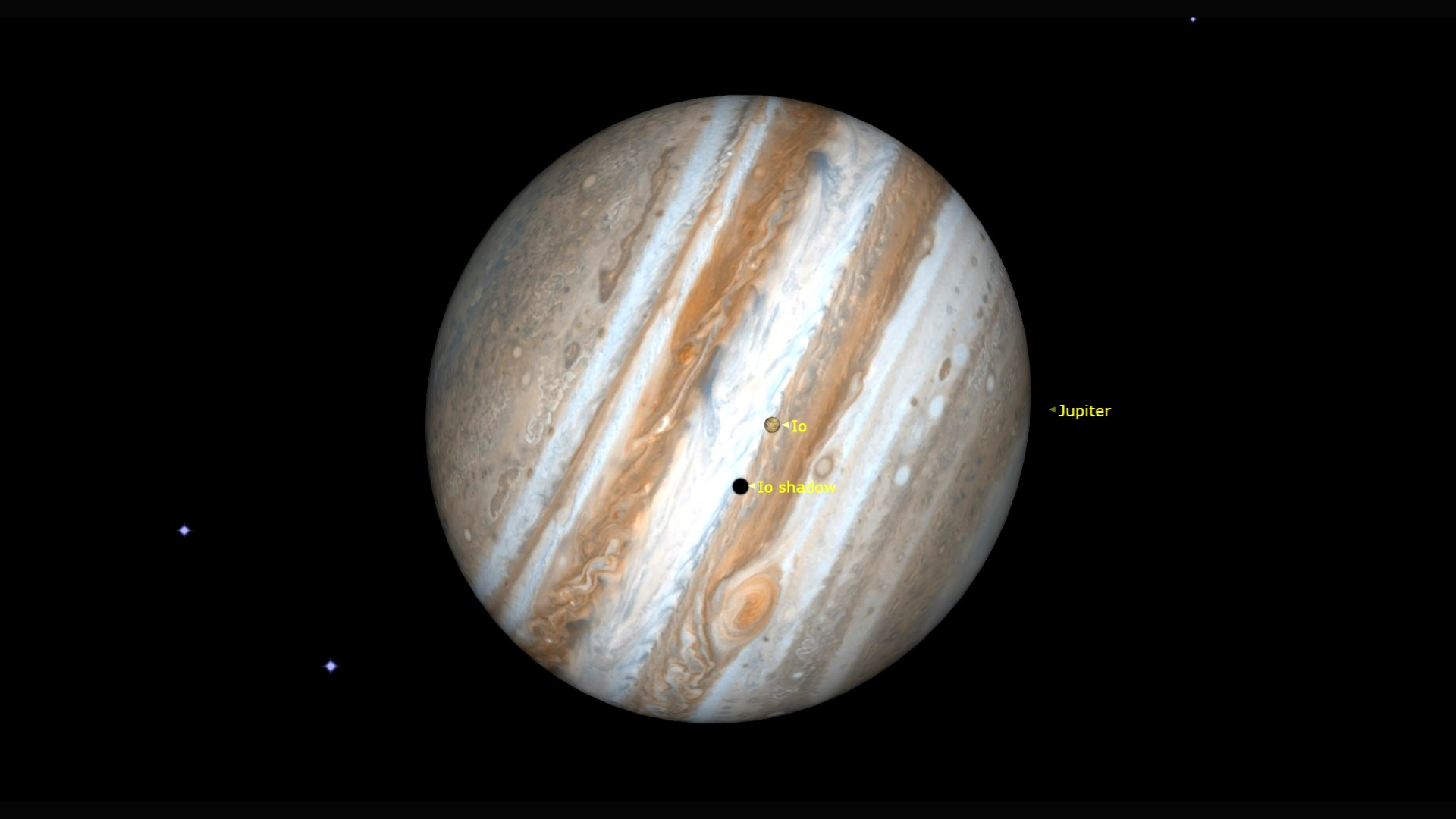Contest to Pick Timing of SOHO's 1,000th Comet

The most prolific comet-hunter in history recently made its 900th discovery of a frozen visitor to the inner solar system, a chunk of ice and rock hurtling precariously close to the Sun.
To celebrate this achievement of the SOHO spacecraft, its operators have begun a contest for the public to pick the timing of the discovery of No. 1,000, officials told SPACE.com.
The winner will receive a SolarMax DVD, a SOHO T-shirt, solar viewing glasses, and more. Prizes will be awarded for second and third place, too. SOHO is a joint project of NASA and the European Space Agency.
Armchair astronomy
Launched in 1995, SOHO was not designed to find comets. Its main job is to monitor the Sun. It has been near death three times but remains the primary tool for detecting solar eruptions that can threaten satellites and even power grids on Earth.
The craft's instruments block out the Sun's main disk, so that images can be taken of the solar atmosphere and surrounding space -- places that are otherwise largely unobservable.
SOHO pictures are posted to the Internet on an almost-live basis. Comets that otherwise go undetected show up plainly. On such a close approach, frozen water and other chemicals are rapidly boiled off a comet, releasing rocky grains too. All this material forms a tail that arcs gracefully away from the Sun and is brilliantly lit.
Breaking space news, the latest updates on rocket launches, skywatching events and more!
Armchair astronomers figured out early on that they could use the images to discover comets. More than 75 percent of the 900 discoveries so far have been made by amateurs. Some of the frozen denizens are swallowed by the Sun shortly after they're spotted. Others arc around the Sun and shoot back out to the outer solar system.
Other comets discovered without SOHO, such as one named Kudo-Fujikawa, have at times been watched in real time by web surfers as they dramatically sliced across SOHO's field of view. In 2003, a comet named NEAT, whose path in front of the SOHO cameras was well predicted, was smacked by a solar storm, the first such event ever recorded.
Enter to win
The contest winner will be the person who guesses closest to the date and time when comet No. 1,000 reaches its point closest to the Sun. Astronomers call this perihelion, and it will occur a within a few days before or after the comet's discovery.
The contest runs now through May 15, 2005. Officials project that the 1,000th discovery will occur sometime between June and October.
To assist contest participants in making projections, the SOHO scientists offered this timetable for discovery milestones (comet number/date of discovery) so far:
100: Feb. 4, 2000
200: Aug. 31, 2000
300: Mar. 25, 2001
400: Feb. 26, 2002
500: Aug. 14, 2002
600: Apr. 29, 2003
700: Dec. 2, 2003
800: June 11, 2004
900: Jan. 15, 2005
The contest entry form and more information are available at http://soho.nascom.nasa.gov/comet1000/.

Starry Night software brings the universe to your desktop. Map the sky from your location, or just sit back and let the cosmos come to you.

Rob has been producing internet content since the mid-1990s. He was a writer, editor and Director of Site Operations at Space.com starting in 1999. He served as Managing Editor of LiveScience since its launch in 2004. He then oversaw news operations for the Space.com's then-parent company TechMediaNetwork's growing suite of technology, science and business news sites. Prior to joining the company, Rob was an editor at The Star-Ledger in New Jersey. He has a journalism degree from Humboldt State University in California, is an author and also writes for Medium.

